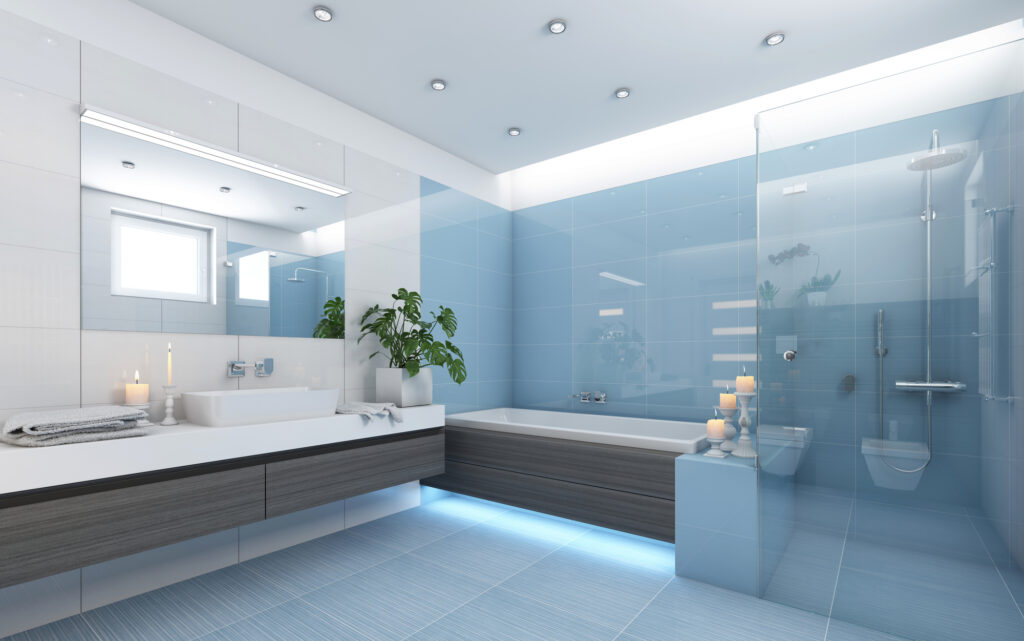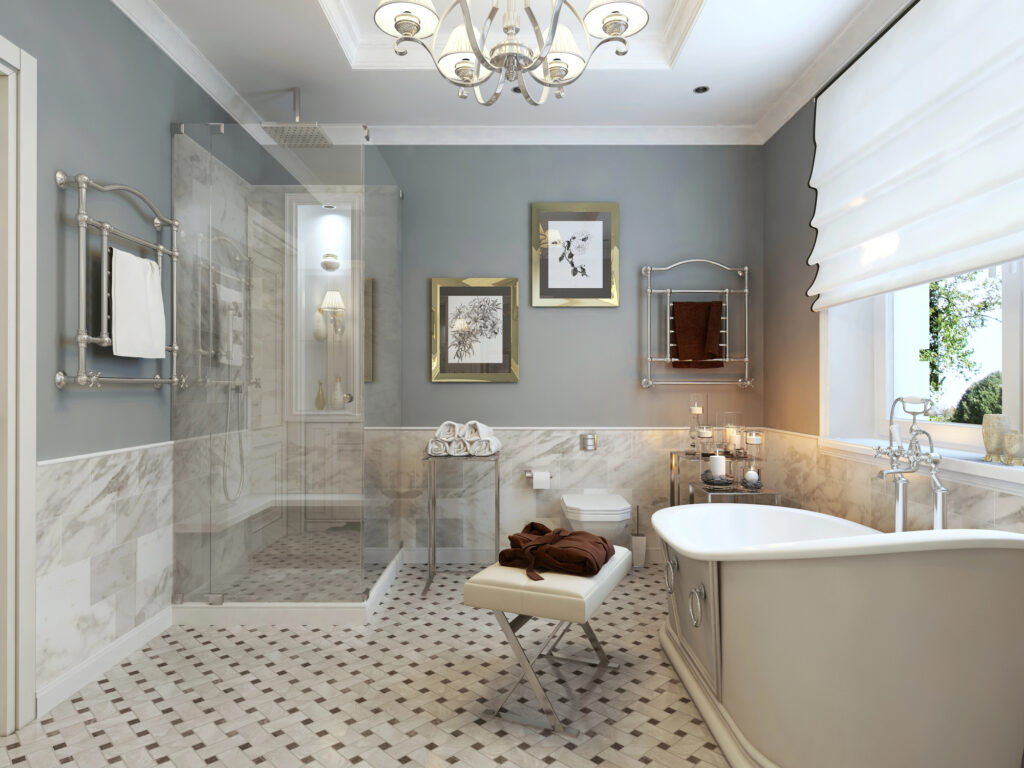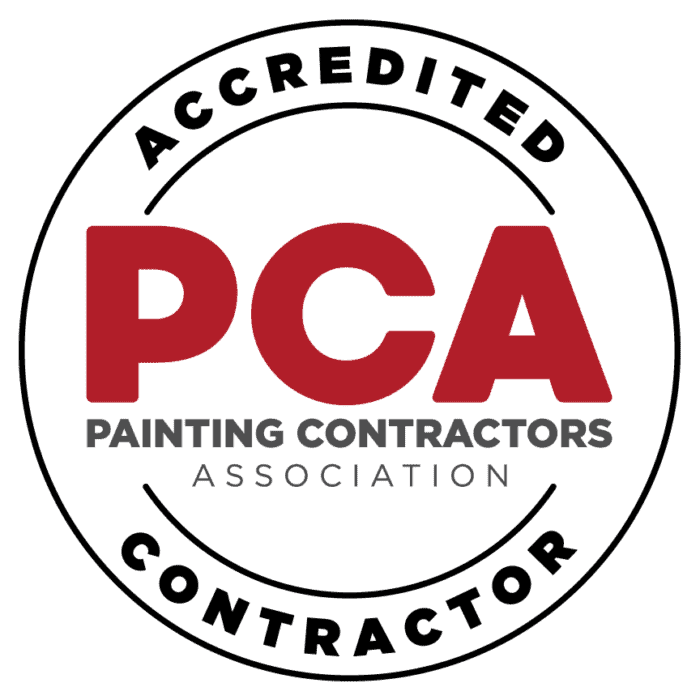Painting a high-humidity bathroom can be a challenge, but with the right approach, you can achieve a beautiful and lasting finish. Whether you’re refreshing your space or tackling a complete renovation, knowing the do’s and don’ts of paint selection is crucial. This guide will help you navigate common pitfalls and ensure your bathroom remains vibrant and mold-free, making it a space you’ll love for years to come. Let’s dive in!
The Do’s of Choosing Paint for a High-Humidity Bathroom
1. Choose Moisture-Resistant Paint
When painting a high-humidity bathroom, it’s essential to choose moisture-resistant paint. These specialized paints are designed to withstand constant exposure to moisture, preventing issues like bubbling, peeling, and cracking. Water-resistant or mold-resistant formulas are particularly beneficial as they help prevent mold and mildew growth, keeping your bathroom cleaner and healthier. These paints are often more durable and longer-lasting, making them a smart investment for high-moisture areas, ensuring your walls remain in great condition over time despite the bathroom’s damp environment.

2. Opt for Semi-Gloss or Gloss Finishes
Semi-gloss and gloss finishes are ideal for bathrooms because they offer excellent durability and moisture resistance. These finishes create a smooth surface that repels water to prevent it from seeping into the walls. Their shiny texture also makes them easy to clean, allowing you to wipe away dirt, stains, and mildew with minimal effort. Their durability also ensures the paint lasts longer to make them perfect for high-humidity environments like bathrooms.
3. Pick Paints Designed for Bathrooms
Selecting specialized bathroom paints is crucial because they are specifically formulated to withstand high humidity, moisture, and frequent temperature changes. These paints often contain mildew-resistant additives, preventing mold growth in damp areas. Popular brands offer bathroom-specific options designed for durability and easy maintenance. Investing in these paints ensure a long-lasting, clean, and mold-free finish.
4. Use a Primer
Using a mildew-resistant primer is essential in bathrooms because it creates a strong, protective base that prevents mold and mildew growth. This type of primer also enhances paint adhesion, ensuring the topcoat sticks well and lasts longer. By sealing the surface, it helps protect against moisture damage to prevent issues like peeling, bubbling, or cracking over time. Applying a primer adds durability and longevity to your bathroom’s paint job.
5. Ensure Proper Ventilation
Proper ventilation is vital for extending paint longevity, as it allows moisture to escape and prevents condensation that can lead to peeling or mold growth. To ensure good airflow during and after painting, open doors and windows, and use fans to promote circulation. Installing exhaust fans can also help remove excess humidity, especially during showers. Good ventilation not only aids drying but also maintains a healthy environment, preserving your paint job for years to come.
The Don’ts of Choosing Paint for a High-Humidity Bathroom

1. Avoid Flat or Matte Paints
Avoid flat or matte paints for high-humidity bathrooms, as these finishes are not suitable for damp environments. Their porous surfaces can absorb moisture, leading to potential issues like staining, mold growth, and peeling. Flat paints are also challenging to clean, making it difficult to remove dirt, soap scum, or mildew. Choosing more durable finishes ensures a long-lasting, attractive, and easily maintainable bathroom that can withstand moisture and everyday wear.
2. Don’t Skip Surface Preparation
Never skip surface preparation before painting, as it’s crucial for achieving a smooth and durable finish. Cleaning and thoroughly drying walls removes dirt, grease, and mildew, which can hinder paint adhesion. If this step is overlooked, the paint may not stick properly, leading to peeling and an uneven appearance over time. Proper preparation ensures that the paint adheres well, enhancing the longevity and quality of your bathroom’s new look.
3. Don’t Overlook Mold and Mildew Concerns
Ignoring mold and mildew concerns in bathrooms can lead to serious health issues and structural damage. Mold-prone areas, if not treated, can spread quickly and compromise air quality. It’s crucial to address any existing mold by thoroughly cleaning and disinfecting affected surfaces before painting. This not only ensures a healthier environment but also enhances the longevity of the paint job, preventing future growth and maintaining the aesthetic appeal of your bathroom.
4. Don’t Choose Cheap, Low-Quality Paints
Choosing cheap, low-quality paints can result in early wear, peeling, and discoloration, especially in a high-humidity bathroom. These inferior products often lack the durability and moisture resistance necessary for such environments, leading to frequent repaints and increased maintenance costs. By investing in higher-quality paints, you ensure a finish that withstands moisture to save you money and time in the long run while enhancing the overall appearance and value of your bathroom.

Hire Professionals at Medias Painting
Medias Painting specializes in transforming bathrooms to withstand high humidity with expert techniques and quality materials. Our team understands the unique challenges of painting in these environments, and we use moisture-resistant paints and durable finishes to ensure a lasting look. We carefully prepare surfaces and apply mildew-resistant primers to guarantee your bathroom not only looks beautiful but also remains protected from moisture-related issues. Contact us today for a professional job that enhances both aesthetics and durability in your bathroom.







